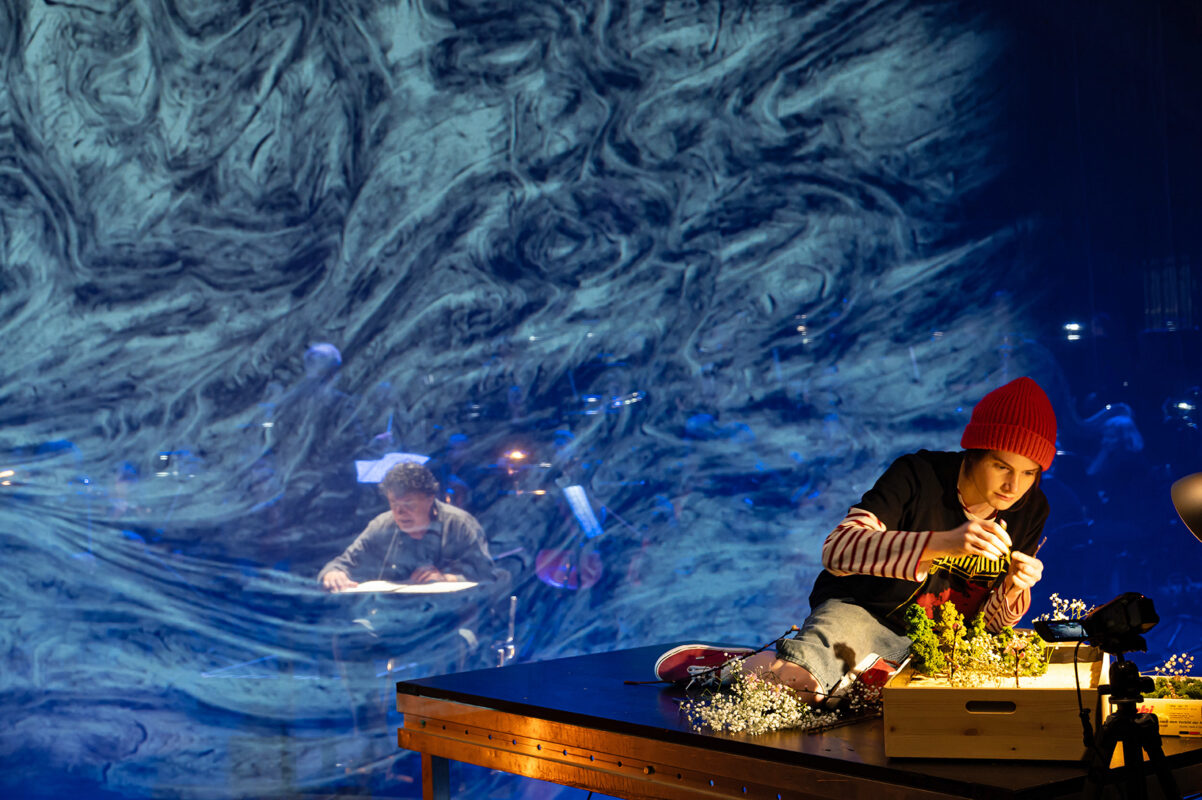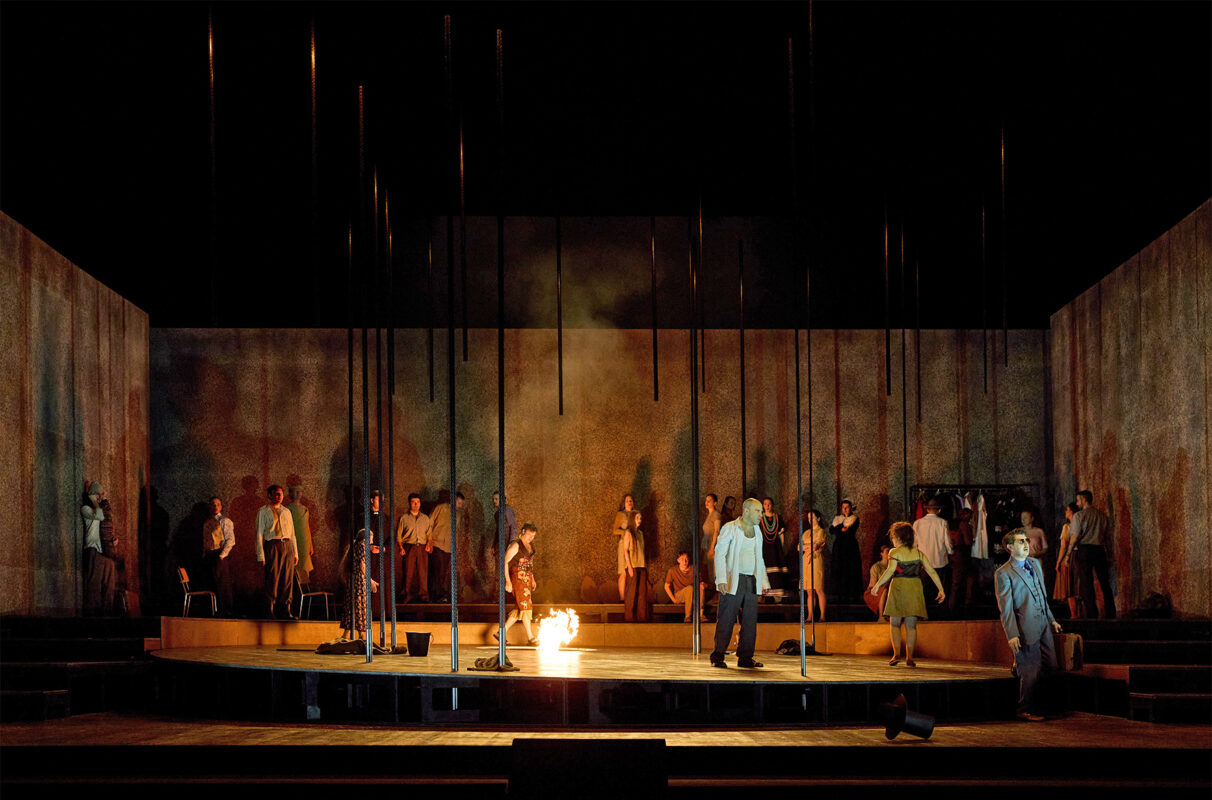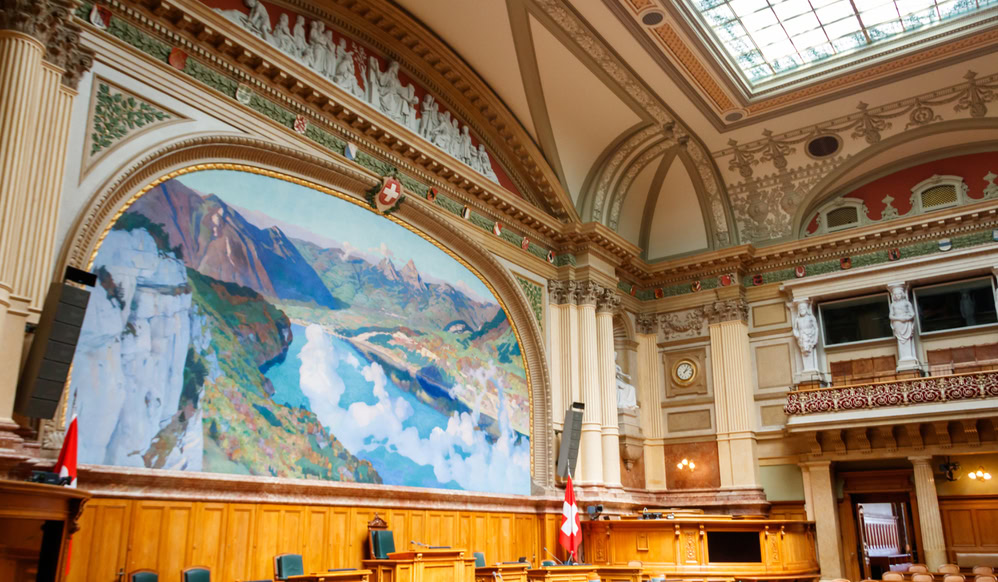Spring can come
On February 11, vokal:orgel and around 180 young voices performed Mendelssohn's "Walpurgisnacht" and other works in a semi-staged performance at the Stadtcasino Basel.
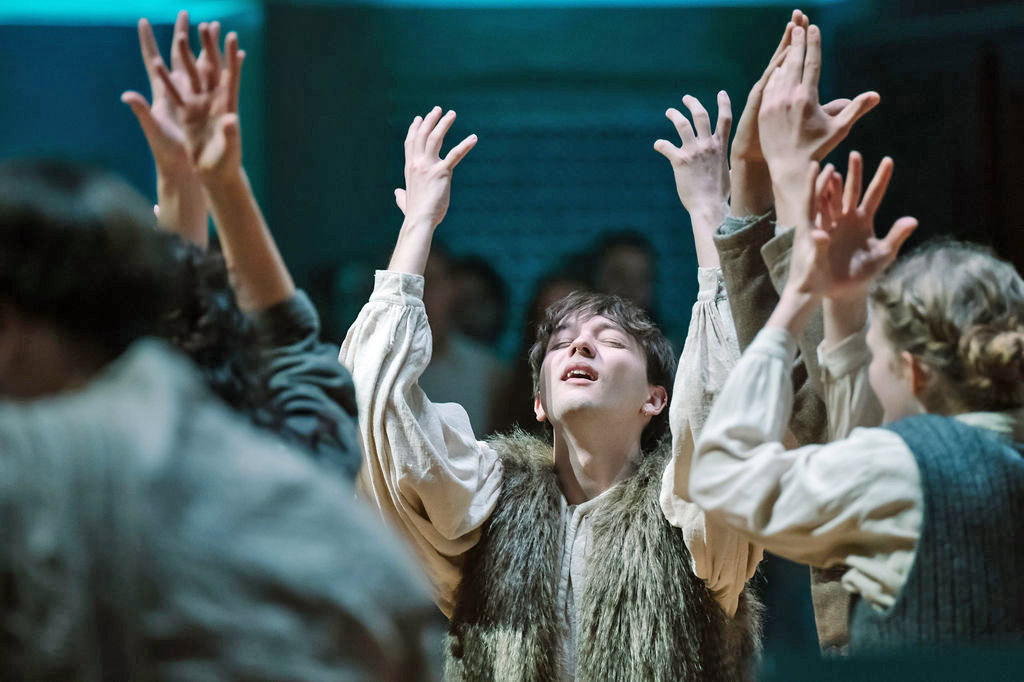
The music city of Basel seems to be longing for May. Yes, a major European music competition is due to take place here, followed shortly afterwards by a major European choir festival. But that's not what we're talking about here - no, we're talking about Walpurgis Night, the traditional "Dance into May".
Derived by name from St. Walburga, the festival has been associated above all with the witches' Sabbath on the Blocksberg since the European witch mania in the 16th and 17th centuries. This meaning was cemented by Goethe, who described the festival in the Fist and poetically described it several times elsewhere. One of these descriptions was eventually turned into music: after his teacher Carl Friedrich Zelter refused, Felix Mendelssohn composed the cantata "The First Walpurgis Night" based on Goethe's text.
This half-hour piece, which drives out winter and heralds the arrival of spring, was performed for the second time in a short space of time at the Stadtcasino Basel on February 11, 2025. Last November, the Collegium Musicum Basel and the Basel Bach Choir performed it, and now the young concert organizer vokal:orgel took it on. While the first performance - in keeping with the two time-honoured institutions - was relatively traditional, the most recent performance on 11 February 2025 was embedded in a thoroughly choreographed, semi-staged overall program that spanned a dramatic arc from the deep, Nordic winter to the festive start of spring.
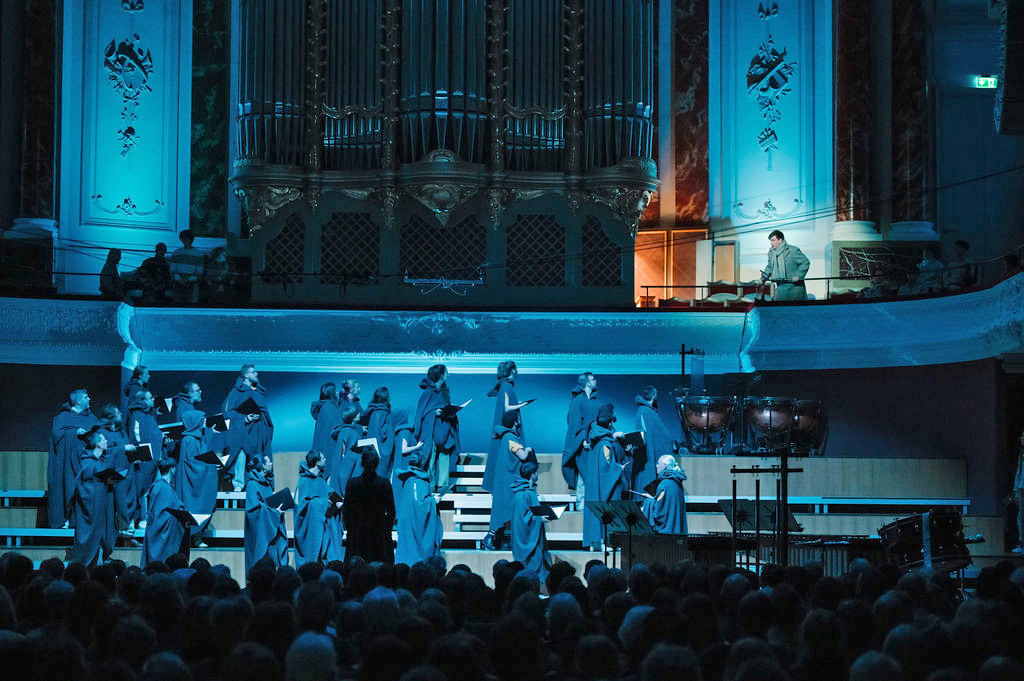
Dark Nordic winter
In complete darkness, the grand piano was raised from its hiding place at the beginning and Dominic Chamot played Fanny Mendelssohn's January from the 12 character pieces. To this end, part of the choir, dressed in monk's robes, took to the stage, where they soon entered the Rondo Lapponico by Gunnar Arvid Hahn - a frosty piece based on the traditional Sami joik, which sings of Lappish nature (geese, waters, hills, forests). After a choral interlude ("Come!"), the ensuing organ composition Évocation II by Thierry Escaich, the choir formed with its back to the audience. This was followed by the Estonian folk song Lauliku Lapsepõli (Engl. "The Childhood of the Singer") in Veljo Tormis' version, in which the choir gradually turned towards the audience. Like most of the Nordic pieces performed, the piece created an almost ethereal atmosphere in the Stadtcasino's music hall, a glassy sonority, like different sheets of ice layered on top of each other. The song led into diffuse whispering, from which a soloist group of speakers finally crystallized and staged a "curse on the iron" - a hauntingly poetic anti-war text, which shortly afterwards was translated into Raua needmine in the original Estonian language and with shamanic drum accompaniment. The intermediate Christian folk song Ma on niin kaunis sang a more conciliatory tune, extolling the beauty of nature, the grace of God and the singing pilgrimage of the soul.
A wintry, Nordic first part was rounded off with Fanny Mendelssohn's Andante espressive, during which the choir imitated the onset of rain with snapping fingers, which, without pausing for breath, led into the beginning - "The Bad Weather" - of the Walpurgis Night by Fanny's brother Felix.
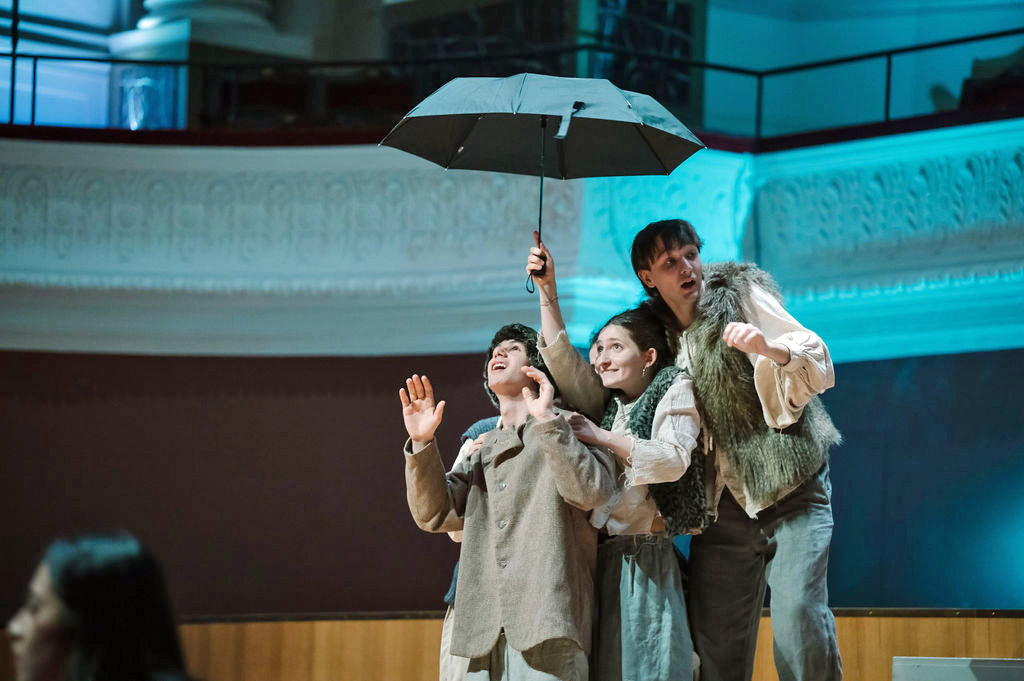
Springtime scenery with organ and piano
For the music of the Walpurgis Night was not responsible for an orchestra on February 11, 2025 as part of the vokal:orgel performance - its part was rewritten for organ, piano and percussion and played by Babette Mondry (organ), Dominic Chamot (piano) and Tomohiro Iino, Pablo Mena Escudero and Yi Chen Tsai (percussion). And while we're on the subject of the participants: The choir was made up of young voices from Muttenz and Laufen high schools and the Steinerschule Birseck, and also included the Young Opera of the Basel Theater - a total ensemble of 180, held together by the direction of Abélia Nordmann.
During the overture to "Walpurgisnacht", the stage set changed from a wintery to a spring-like scene - with yellow-green clothing for the choir (who also brought out colorful wreaths of flowers) and equally colorful lighting. Mendelssohn's piece also worked in the special arrangement - the Metzler-Klahre organ in the Stadtcasino, with its 350 or so mixtures of stops, was able to harmoniously suggest the different timbres of the orchestra and at the same time lend the music its own, winning touch; the piano provided support, particularly in the contouring of the melodies. Vocally, not only the choir, but also the soloist and soloists were convincing - baritone Felix Gygli, whose volume, phrasing and stage presence were impressive, deserves special mention.
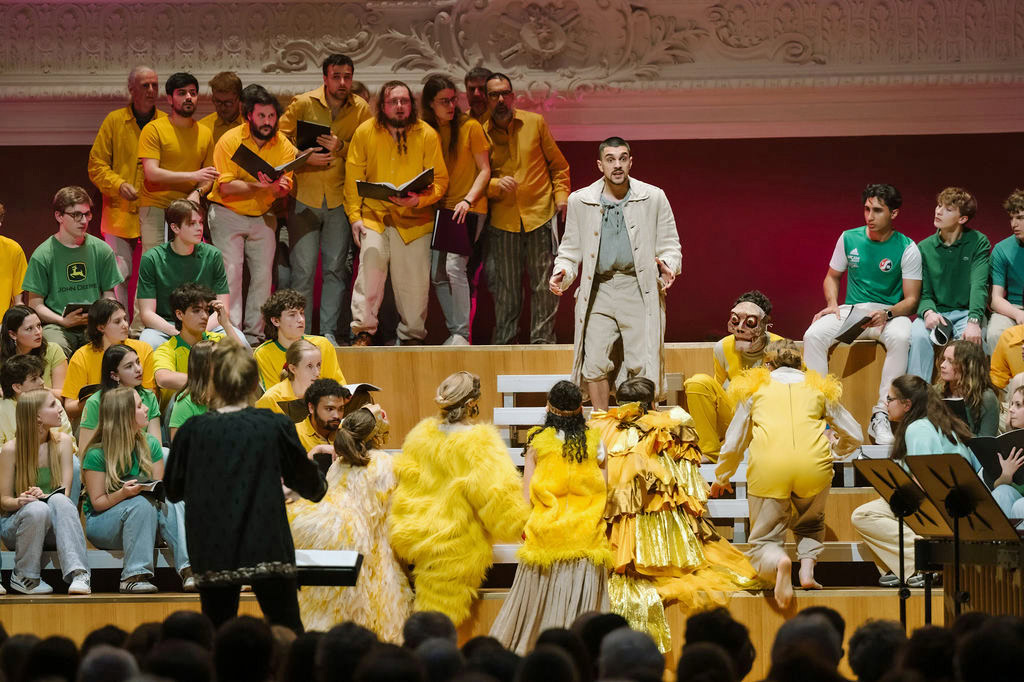
The integration of the scenic elements (for which Salomé im Hof was responsible) was also successful, and the masked appearance of the "human wolves and dragon women" even briefly created a bit of a carnival atmosphere in the Stadtcasino. The overall dramaturgical structure of the performance was carefully and sensibly thought out - from Fanny to Felix Mendelssohn, from winter to spring, from dark to bright; and in the first part there were several discoveries from the Scandinavian and Baltic vocal repertoire. The great enthusiasm of the participants, especially that of the choir, was downright infectious. Conclusion: spring can come.
Transparency notice:
Lukas Nussbaumer wrote the text on behalf of vokal:orgel and was honored for it. The text was first published on the author's website lukasnussbaumer.com published.







